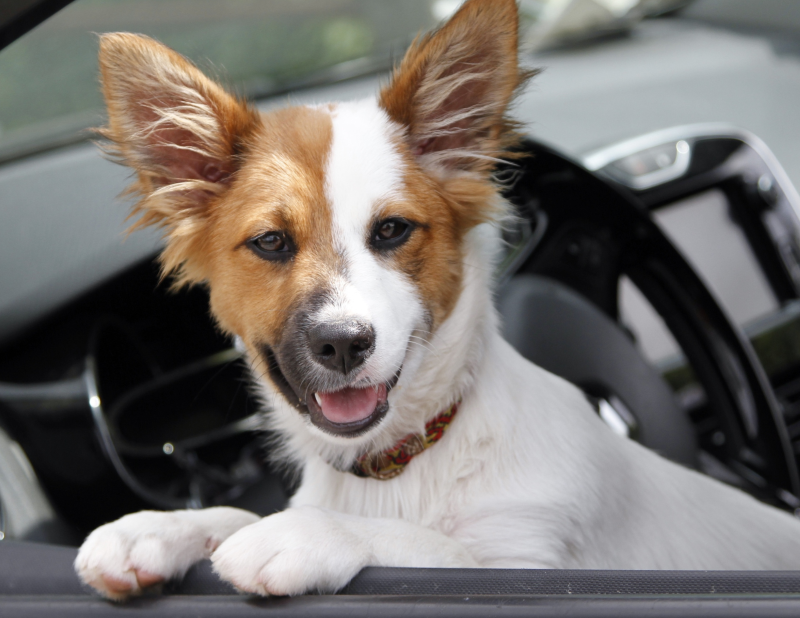As dog lovers, we all want our furry companions to feel their best—and that starts with proper grooming. From preventing painful matting to boosting skin health, regular grooming routines are essential for your dog’s overall well-being. While professional grooming is important, maintaining a solid at-home care routine between those appointments is just as vital.
This guide will walk you through how often to schedule grooming appointments based on your dog’s breed and coat type, and how to care for your dog at home between visits. Whether you’re a new puppy parent or looking to level up your current routine, you’ll find everything you need to keep your dog clean, healthy, and happy.
How Often Should Your Dog Visit the Groomer?
There’s no one-size-fits-all answer when it comes to professional grooming. Breed, coat type, and even your dog’s lifestyle all play a role. Here’s a general schedule to guide you:
- Short-haired breeds (e.g., Beagle, Boxer): Every 8–12 weeks
- Double-coated breeds (e.g., Labrador, Husky): Every 6–10 weeks, especially during shedding seasons
- Curly-coated breeds (e.g., Poodle, Bichon Frise): Every 4–6 weeks to prevent matting
- Silky or long-haired breeds (e.g., Shih Tzu, Yorkie): Every 4–6 weeks, with daily at-home brushing
- Wiry-coated breeds (e.g., Schnauzer, Terrier): Every 6–8 weeks for trimming and hand-stripping if needed
Speak with a professional groomer about your dog’s individual needs, especially if they have allergies or skin sensitivities.
At-Home Grooming: Daily and Weekly Must-Dos
Between grooming appointments, consistent maintenance at home is key. Here’s what your routine should include:
- Brushing: Aim for daily brushing for long or curly coats and 2–3 times a week for short coats.
- Ear checks: Weekly cleanings help prevent infections, especially in floppy-eared breeds.
- Tooth brushing: 2–3 times per week, ideally daily. Use only dog-safe toothpaste.
- Paw patrol: Wipe paws after walks, especially in winter or after muddy adventures.
- Bathing: Once every 4–8 weeks, unless your pup gets extra dirty. Avoid overbathing, which can strip natural oils.
The right tools make a huge difference. Use breed-specific brushes and grooming products tailored to your dog’s coat and skin type.
Best Brushes for Each Coat Type
Different dogs need different tools. Here’s how to choose the best brush for your dog’s coat:
- Short, Smooth Coats (e.g., Dalmatian): Rubber curry or bristle brush
- Short, Double Coats (e.g., Pug, Labrador): Slicker brush + deshedding tool
- Long, Silky Coats (e.g., Maltese, Yorkie): Pin brush + fine-toothed comb
- Flowing, Long Coats (e.g., Afghan Hound): Pin brush + slicker for tangles
- Curly Coats (e.g., Poodle): Slicker brush + metal comb
- Heavy Double Coats (e.g., German Shepherd): Undercoat rake + slicker brush
Always brush in the direction of hair growth and be gentle around sensitive areas like the belly and tail.
Introducing Puppies to Grooming
Starting early makes a world of difference. Puppies are naturally curious, but unfamiliar grooming tools can be intimidating. Here’s how to ease them in:
- Start young: Begin brushing sessions as early as 8–12 weeks.
- Keep it short and sweet: Start with 5–10 minute sessions and reward with treats.
- Make it positive: Praise, play, and petting help build good associations.
- Touch tolerance: Get your puppy used to having their paws, ears, and mouth handled.
Getting your pup comfortable early on sets them up for stress-free grooming for life.
Why Routine Grooming Is More Than Just Looks
Sure, a well-groomed dog looks great, but grooming goes far beyond aesthetics:
- Prevents matting and skin irritation
- Reduces excess shedding
- Distributes natural oils for a healthy coat
- Boosts circulation and skin health
- Allows you to detect issues early (lumps, ticks, infections)
- Strengthens the bond between you and your dog
Regular care can even reduce vet bills by catching problems before they become serious.
Final Thoughts
Grooming isn’t just a luxury—it’s a vital part of your dog’s health and happiness. By sticking to a professional grooming schedule that suits your dog’s breed and coat type, and by keeping up with at-home maintenance, you’re ensuring your pup feels comfortable, confident, and loved.
Don’t wait for matting or odor to tell you it’s time. Make grooming a natural and consistent part of your dog’s life, and you’ll both reap the benefits. Your pup might not say it out loud, but every tail wag and happy nuzzle will show their appreciation.
FAQs
1. How do I know if my dog needs professional grooming?
All dogs benefit from professional grooming, regardless of breed or coat type. While some may need more frequent appointments, every dog can gain from services like nail trimming, ear cleaning, and coat care that are difficult to manage fully at home. Professional groomers are also trained to spot skin and coat issues you might miss.
2. What should I do if my dog hates brushing?
Introduce brushing gradually with positive reinforcement. Use gentle tools and keep sessions short until they adjust. Reward calm behavior with treats and praise to create positive associations.
3. Can I use human shampoo on my dog?
No, human shampoos can irritate a dog’s skin. Always use shampoos formulated specifically for dogs to maintain the natural pH balance of their skin.
4. How do I trim my dog’s nails safely?
Use a dog nail clipper or grinder. Trim only the tip and avoid the pink quick inside the nail to prevent bleeding. If you’re unsure, ask your vet or groomer for a demonstration.
5. Is it okay to bathe my dog every week?
Unless recommended by your vet for skin conditions, frequent bathing can dry out your dog’s skin. Stick to every 4–8 weeks, and always use moisturizing, dog-safe shampoos.



